In this article you will find the following:
Depending on how you have it set up, the Mail app on macOS can take up a large amount of storage space. As well as keeping copies of the text in emails, Mail can also download copies of attachments. Too many of those, and you can find your Mac filling up quickly—potentially with attachments you’ll never have any use for. Luckily, finding and deleting unwanted mail files from your Mac’s storage can be an easy way to free disk space.
Before we start:
Think about how many mail attachments you download when you receive emails. How often do you take the time to delete those downloads? Probably rarely. Mail attachments accumulate quickly and can clog up your disk. If left unattended, all that clutter can slow down your Mac.
Deleting mail attachments manually is a hassle. Consider automating the process with MacKeeper’s Safe Cleanup tool. It quickly finds mail attachments and clears them in a fraction of the time it would take you.
Here’s how to use it:
- Download MacKeeper and select Safe Cleanup in the sidebar.
- Click the Start Scan button and follow the progress of the scan on the screen.
- When the scan is complete, click Clean Junk Files.
In this article, we’ll show you how to manage emails and free up space on your Mac by deleting your mail attachments. Let’s get started.
How to check Mail storage on Mac
Before you start clearing out Mail’s storage on your Mac, it’s a good idea to know how much space it’s actually taking up. If it’s only a small amount, then it might not be worth clearing out that space.
How to check Mail storage on a Mac:
- In Finder, click the Apple icon in the menu bar, and select About This Mac.
- Click Storage, followed by Manage.
- In the left-hand column, you’ll see how much storage space is being used by Mail.
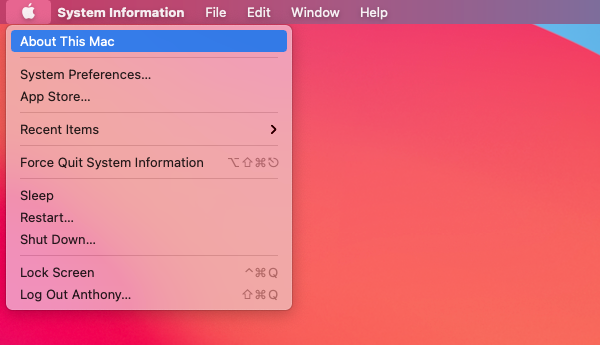

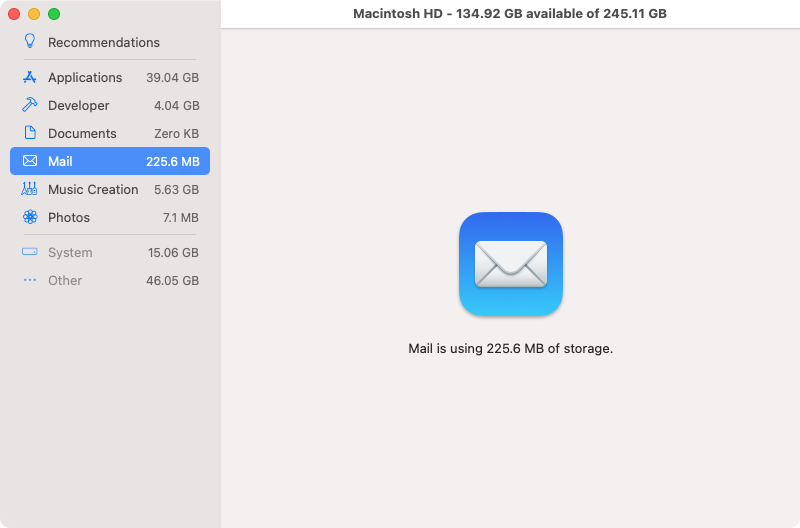
Where are mail attachments stored on Mac?
Email attachments are saved in your Mac’s Downloads folder. You can access the Downloads folder via your Mac’s browser menu and in Finder.
How to remove mail attachments on Mac
Get into the habit of clearing mail attachments to keep your Mac in working order and to improve its performance. Fortunately, there are several ways to achieve this:
- Get rid of mailbox attachments in single messages
- Clear multiple attachments in the Mail app
- Manually clear mail storage on a Mac
- Clearing mail storage with MacKeeper
Follow this guide carefully to lighten the load on your Mac’s disk by deleting mail attachments.
1. Get rid of mailbox attachments in single messages
One of the best ways to manage mail attachments is to delete them when you receive an email. This helps you avoid them building up and becoming a nuisance over time. Here’s how to get rid of mail attachments:
- Open the Mail app on your Mac and select the email that contains the attachments you want to delete.
- Choose Message in the top menu bar and select Remove Attachments.
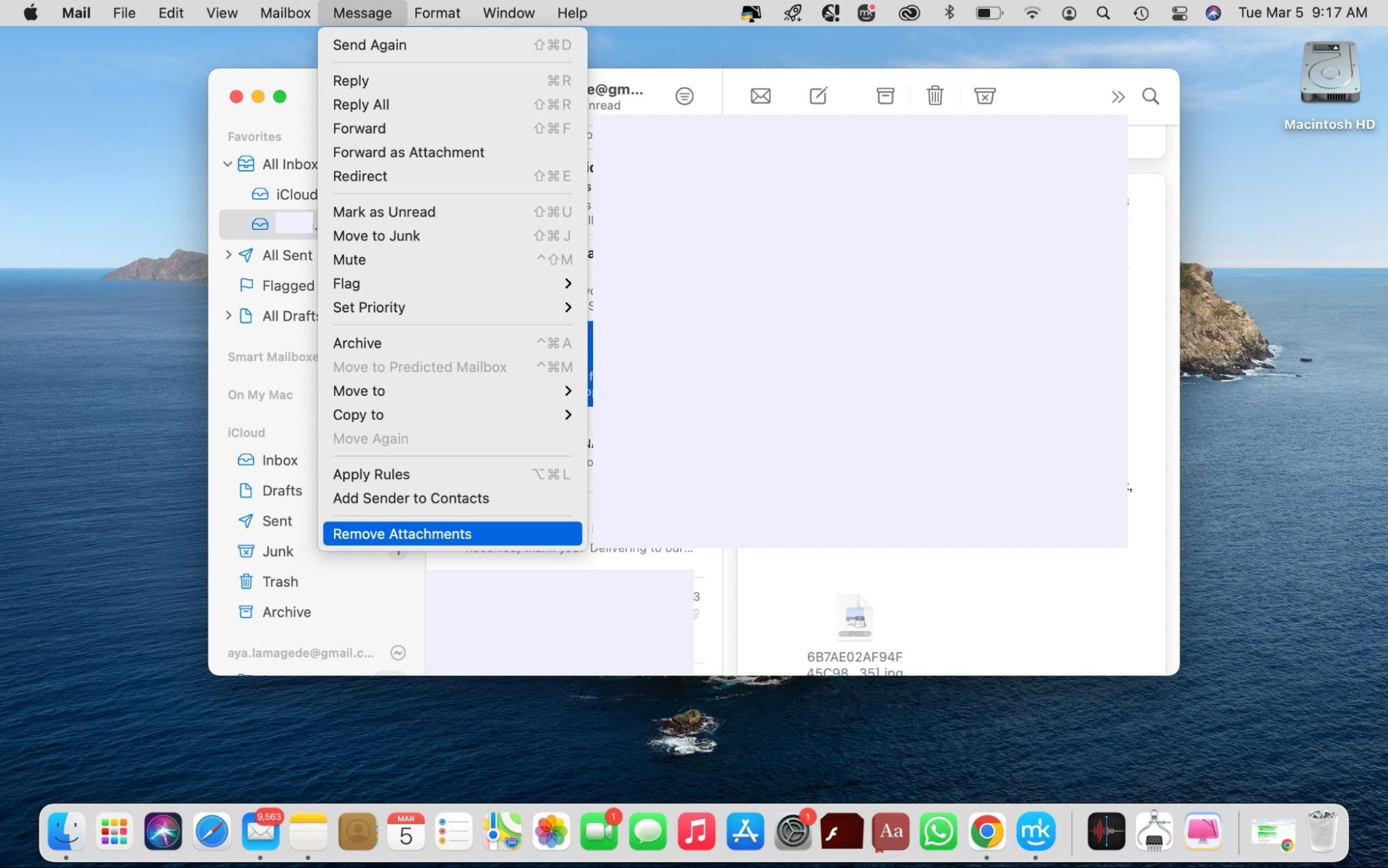
Note from our experts: When you delete an email attachment, the email is annotated to let you know that the attachment was deleted. However, when you delete an email that contains an attachment, you lose the attachment in it, too, unless you saved it.
Do you want to clear your entire Downloads folder? Learn how to delete downloads on Mac.
2. Clear multiple attachments in the Mail app
You can remove attachments from emails one at a time (as we previously discussed) or from multiple emails within the Mail client (see the difference below).
To remove multiple attachments in Mail for Mac:
- Press the Command + A keys to select multiple emails in your Mail app.
- From the menu bar, select Message.
- Click Remove Attachments.
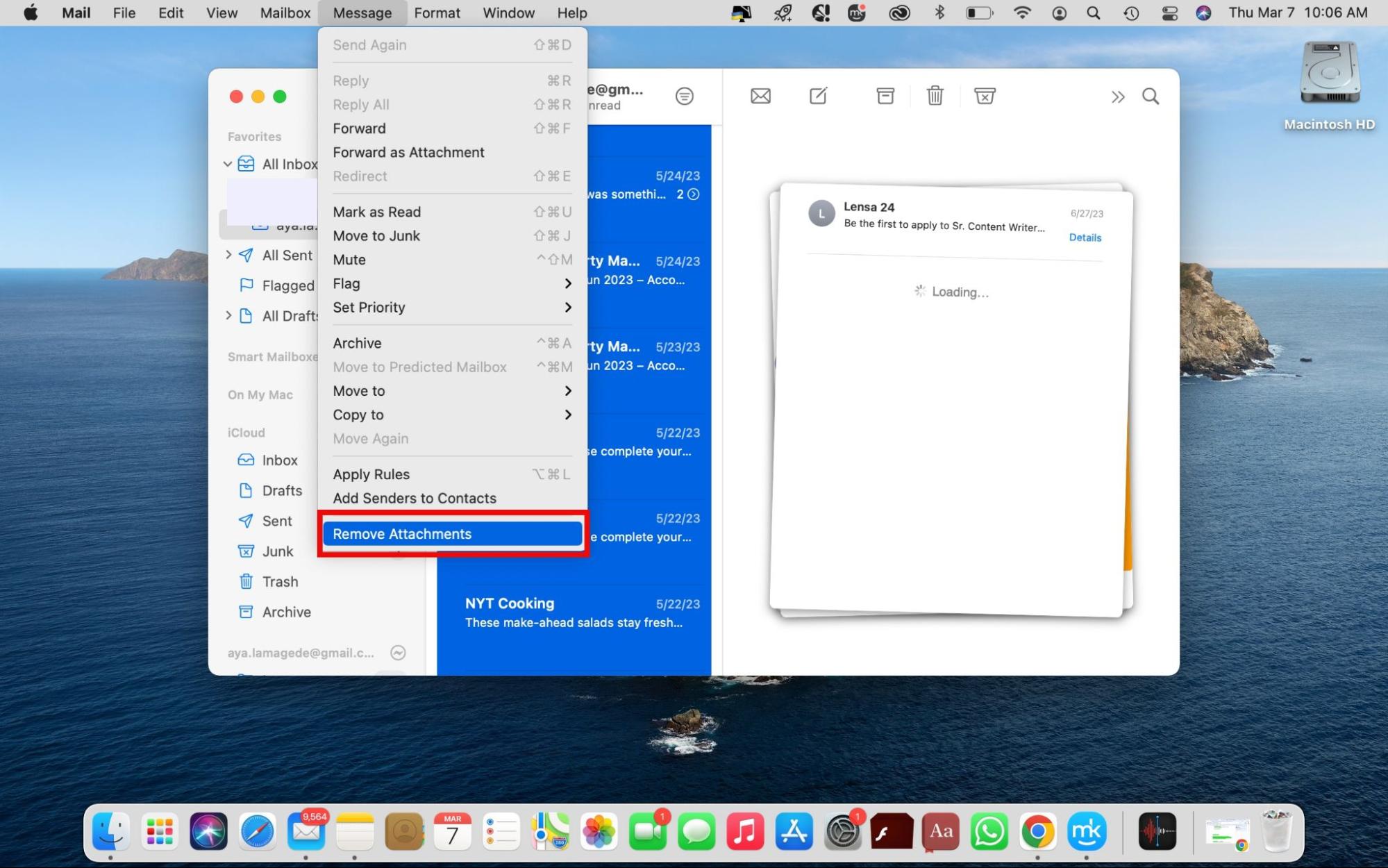
If you own a MacBook device running macOS Sierra, you’ll notice that the Remove Attachments option doesn’t appear. In this case, you can use another method to remove mail attachments. Simply open the Mail app, select Mail in the menu bar, followed by Preferences, then click on Accounts and set Download Attachments to None.
3. Manually clear Mail storage on a Mac
You can also clear Mail storage from your Mac manually using Finder. This involves looking through a lot of different folders, though, some of which have long, complicated names. So it’s not the best way of clearing Mail storage, but it’s possible, too.
Here’s how to delete Mail files manually on a Mac:
- In Finder, click Go in the menu bar at the top.
- Hold down Option to make Library appear, and then click it.
- Navigate to Library > Mail. In there, you’ll find a folder that starts with a V, followed by a number. Click on it.
- If you browse through the subfolders within this folder, you’ll find there are some Attachments folders in them, which you can delete. To help you find them, type Attachment in the search bar, then delete whatever comes up in the results.
- You might also see a folder in Library called Mail Downloads. Open this and look in there as well for downloaded files.
- As well as downloaded attachments, the Mail folder location contains your message files. These have a .emlx extension. There’s no way to identify what they’re without opening them, but if you want to clear out all of them, you could just drag them to Trash. But these files are tiny, so it’s generally not worth the effort, and you’d be better off using the Mac Mail client to clear your emails.
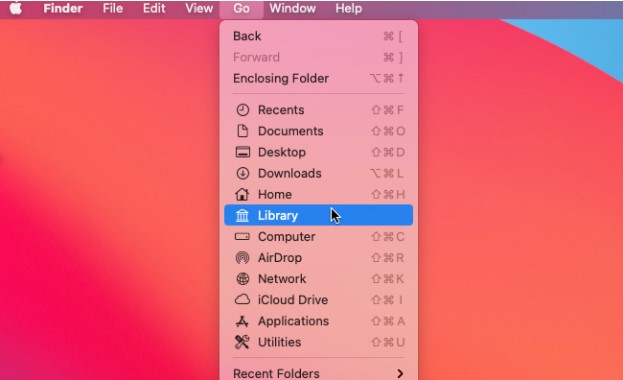
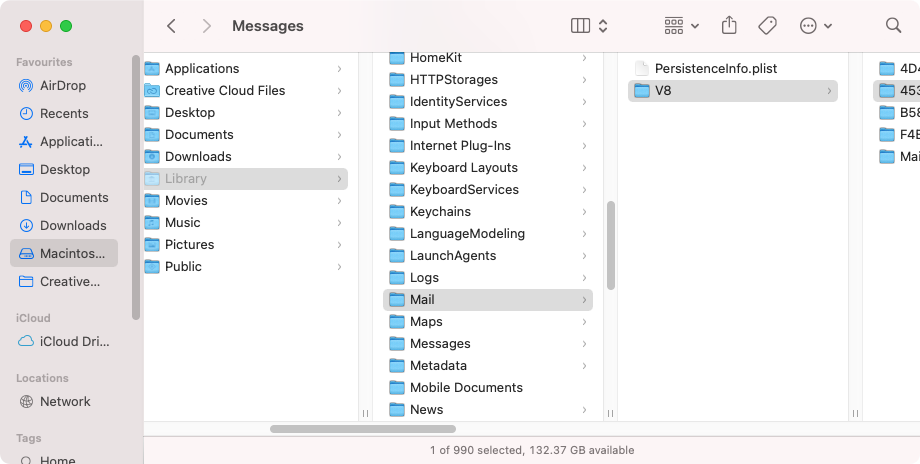
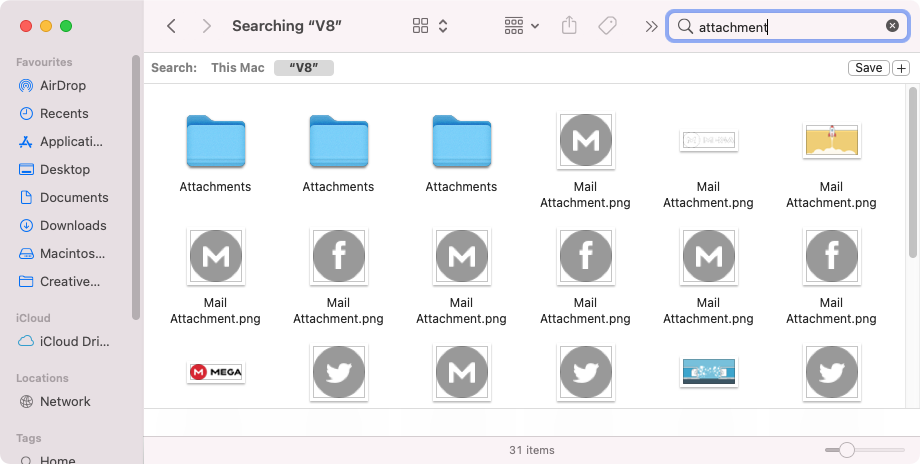
Hint from our team:
Are you experiencing issues with the Mail app? Learn what to do when Mac Mail isn’t working.
4. Clearing Mail storage with MacKeeper
Using MacKeeper, you can easily scan for email attachments and cached files from Mail. This is the easiest way to find and remove Mail files from your Mac’s storage.
How to clear mail files using MacKeeper:
- Launch MacKeeper.
- Select Safe Cleanup in the left-hand menu, and click Start Scan.
- When the scan is finished, you can simply click Clean Junk Files to empty your disk of that particular data.
- For more information, click Mail Attachments. Then, choose an email account and click the arrow next to it to see what attachments Mail has saved.
- MacKeeper might also find files in Mail’s caches. To check, when MacKeeper has finished its scan, click Caches, then look under Mail Caches.
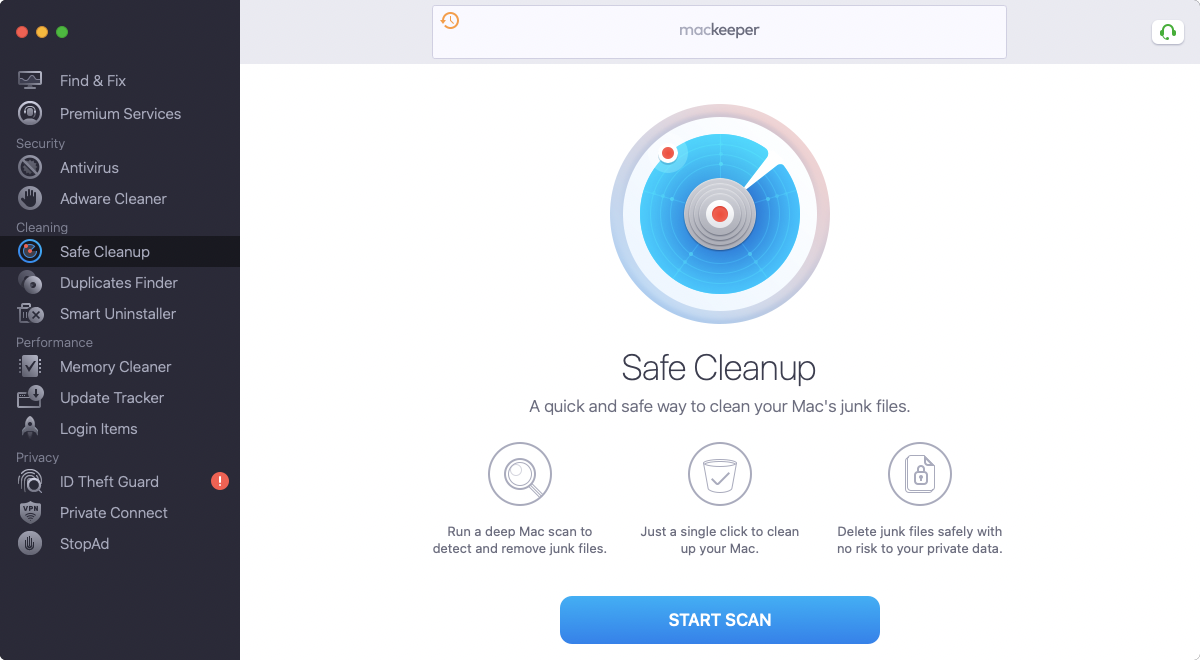
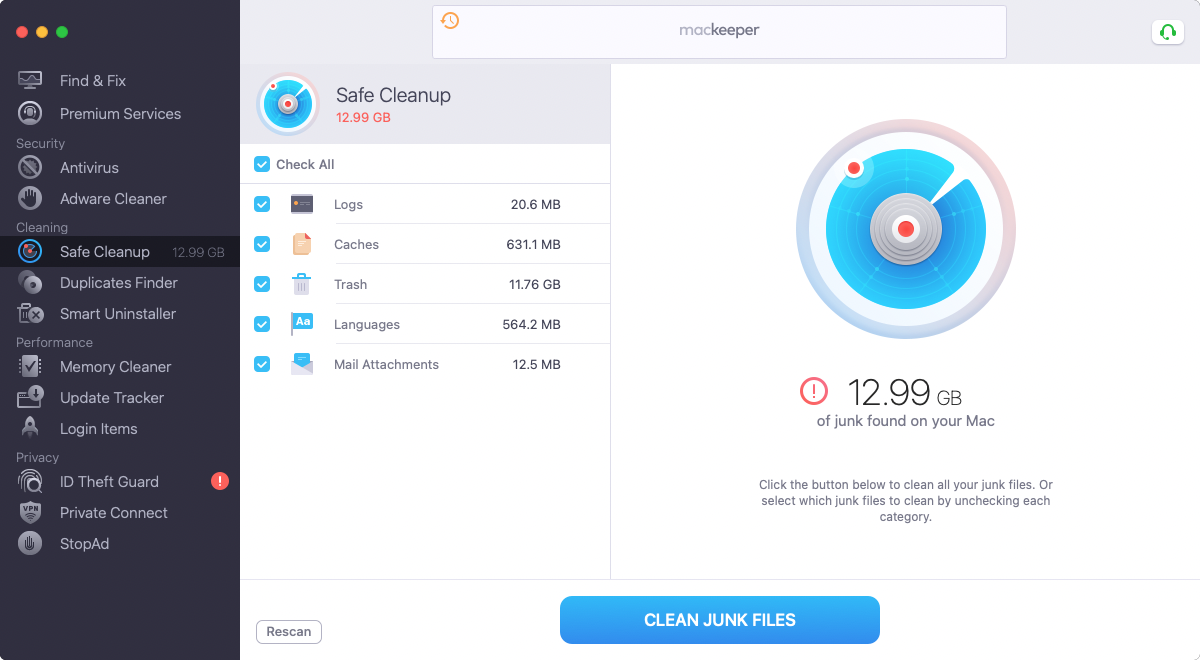
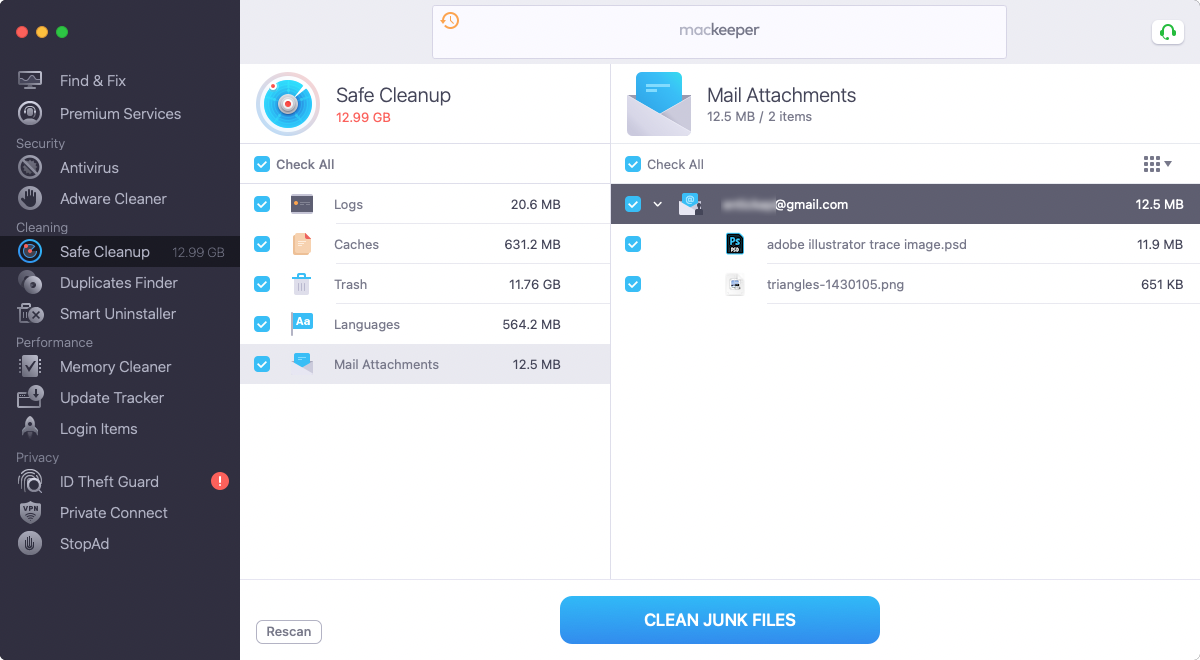
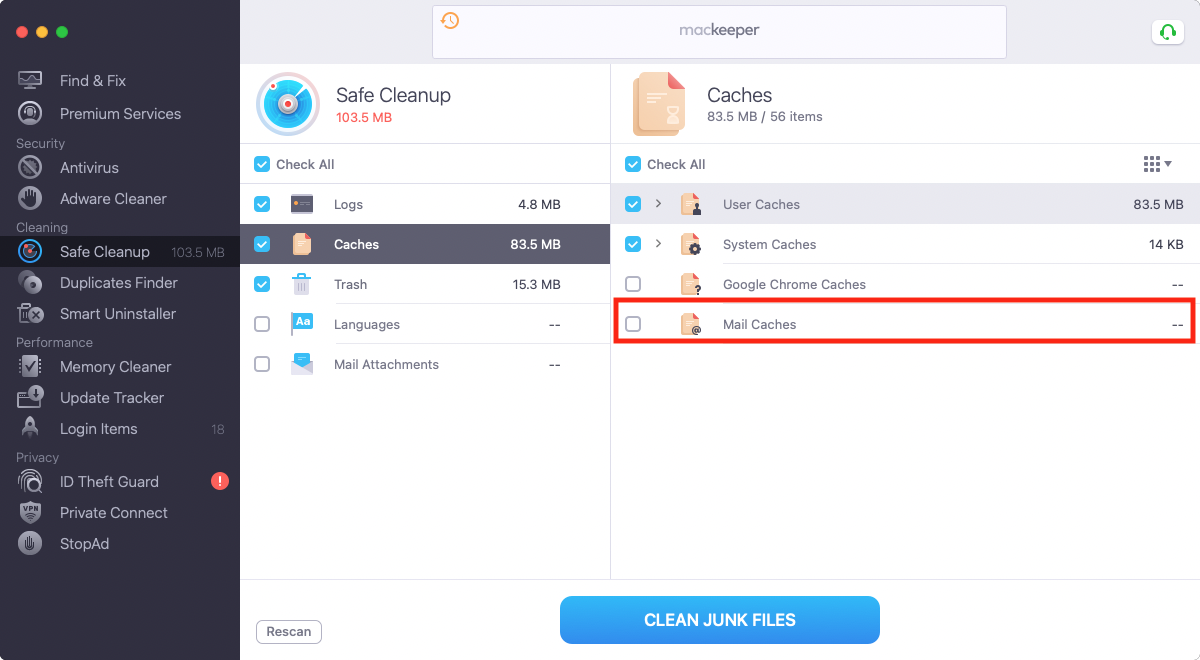
Depending on how you use email and your settings in Mail, you may not need to clear mail storage on your Mac very often. But after using it for a long time, you can easily end up losing gigabytes of storage to email attachments and images you don’t want.
By changing the settings in the Mail app and periodically scanning your Mac with MacKeeper, you can stop Mail attachments from becoming a problem.
How to change Mail attachment settings
The text part of emails doesn’t take up much space. Attachments, on the other hand, can be several megabytes in size. Over time, they can quickly accumulate and fill up your system disk. Fortunately, it’s easy to stop Mail from downloading attachments automatically.
To change attachment settings in Mail for Mac:
- In Mail, go to the menu bar, and select Mail > Preferences.
- Click Accounts and choose the email account you want to make changes to.
- In the Download Attachments dropdown, select None.
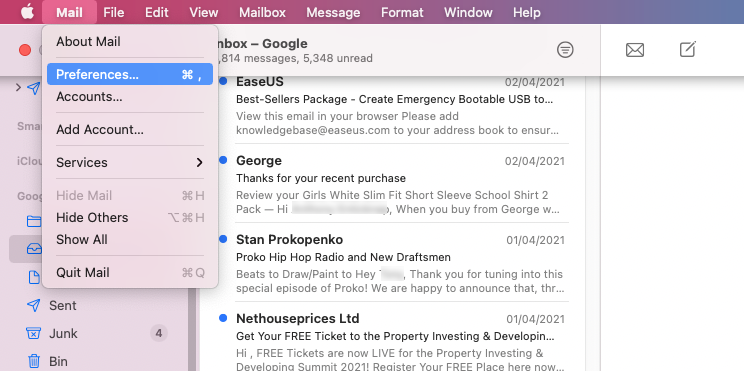
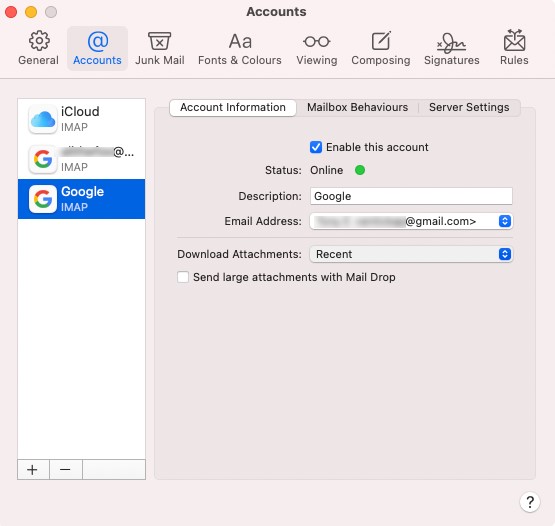
There are also options to download only recent attachments or to download them all. This is a quick and easy way to manage which attachments are automatically downloaded by Mail. If Mail is set to download no attachments, you can still download them manually when you need to.
Deleting Mail storage attachments to free up space
Many people neglect to delete mail attachments when maintaining their MacBook Pro or Air devices. However, this simple action can help optimize your Mac, reduce junk files, and free up much-needed space—though not permanently.
What better way to delete unwanted mail attachments than with an efficient tool? MacKeeper’s Safe Cleanup tool automates the process of clearing your mail attachments, which saves you time and effort. Use it regularly to keep your Mac free of clutter.
FAQ
Does it matter if you use POP3 or IMAP?
There are a couple of main ways to connect an email account: POP3 and IMAP. With POP3, your emails are downloaded to your Mac and deleted from the server. But with IMAP, they remain on the server after being downloaded to your Mac. This is an important distinction when you’re trying to clear Mail storage from your Mac. If you remove Mail attachments on Mac, they’ll just download again the next time you synchronize, unless you set Mail not to download attachments.
Can you stop using Mail?
If you’re using Mail to access a webmail account like Gmail, then it might not be necessary to use it at all. You could just access your email via a web browser, so then your emails and their attachments would be stored on a remote server, rather than your Mac.
What Mail offers, apart from more controls and options, is close integration with other built-in macOS apps like Calendar. But if you’re not using those features, then you could save yourself a lot of storage space by simply not using Mail at all.
Where is mail stored on a Mac?
You’ll find your emails stored in various subfolders of ~/Library/Mail. There are also Attachment folders in there, which contain downloaded files. You might also see Mail Downloads in Library. Now, delete the files in there to get back some disk space.







